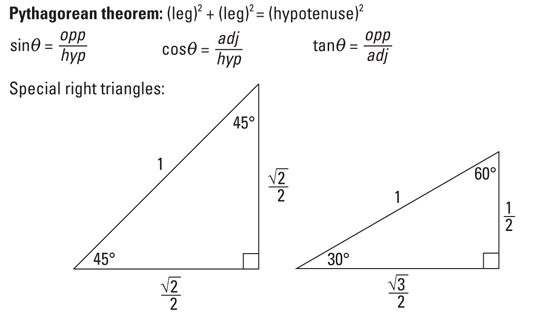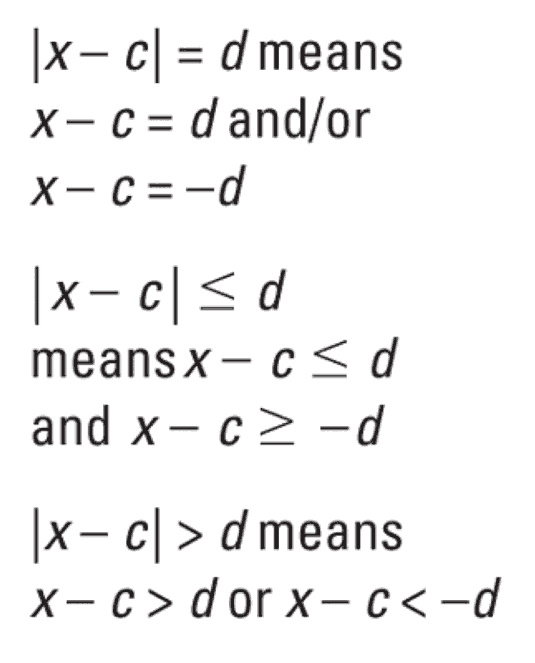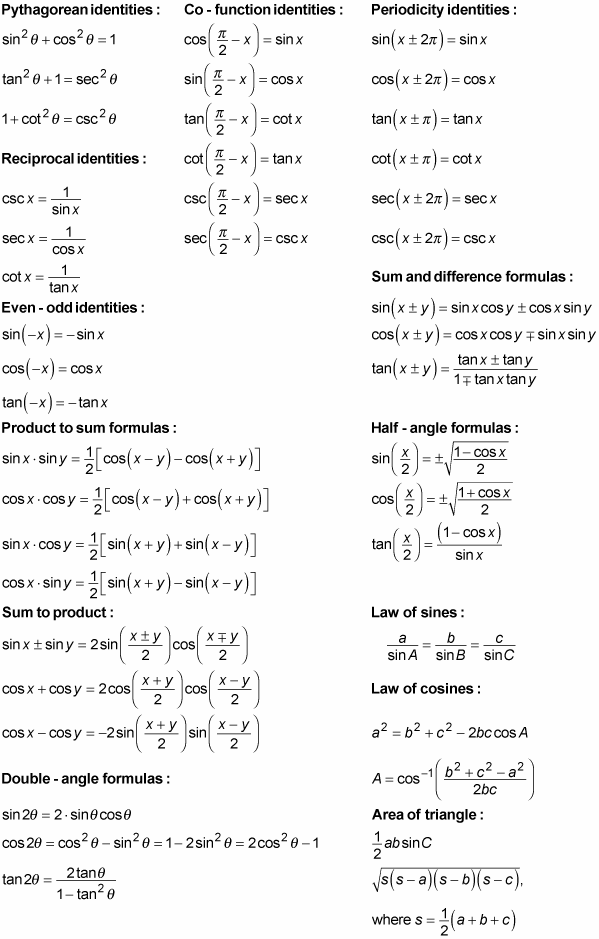Pre-calculus bridges Algebra II and Calculus, itself. While working with it, you graph, you deal with angles and geometric shapes such as circles and triangles, you find absolute values. You discover new ways to record solutions with interval notation and you plug trig identities into your equations.
>
>
Pre-Calculus Unit Circle
In pre-calculus, the unit circle is sort of like unit streets, it’s the very small circle on a graph that encompasses the 0,0 coordinates. It has a radius of 1, hence the unit. The figure here shows all the measurements of the unit circle:

>
>
>
Right Triangles and Trig Functions for Pre-Calculus
If you’re studying pre-calculus, you’re going to encounter triangles, and certainly the Pythagorean theorem. The theorem and how it applies to special right triangles are set out here:

>
>
>
How to Format Interval Notation in Pre-Calculus
In pre-calculus you deal with inequalities and you use interval notation to express the solution set to an inequality. The following formulas show how to format solution sets in interval notation.

>
>
>
Absolute Value Formulas for Pre-Calculus
Even though you’re involved with pre-calculus, you remember your old love, algebra, and that fact that absolute values then usually had two possible solutions. Now that you’re with pre-calculus, you realize that absolute values are a little trickier when you through inequalities into the mix. Never fear, the following formulas show you how to deal with absolute values in pre-calculus.

>
>
>
Trig Identities for Pre-Calculus
Of course you use trigonometry, commonly called trig, in pre-calculus. And you use trig identities as constants throughout an equation to help you solve problems. The always-true, never-changing trig identities are grouped by subject in the following lists:

>
>
dummies
Source:http://www.dummies.com/how-to/content/precalculus-for-dummies-cheat-sheet.html
No comments:
Post a Comment